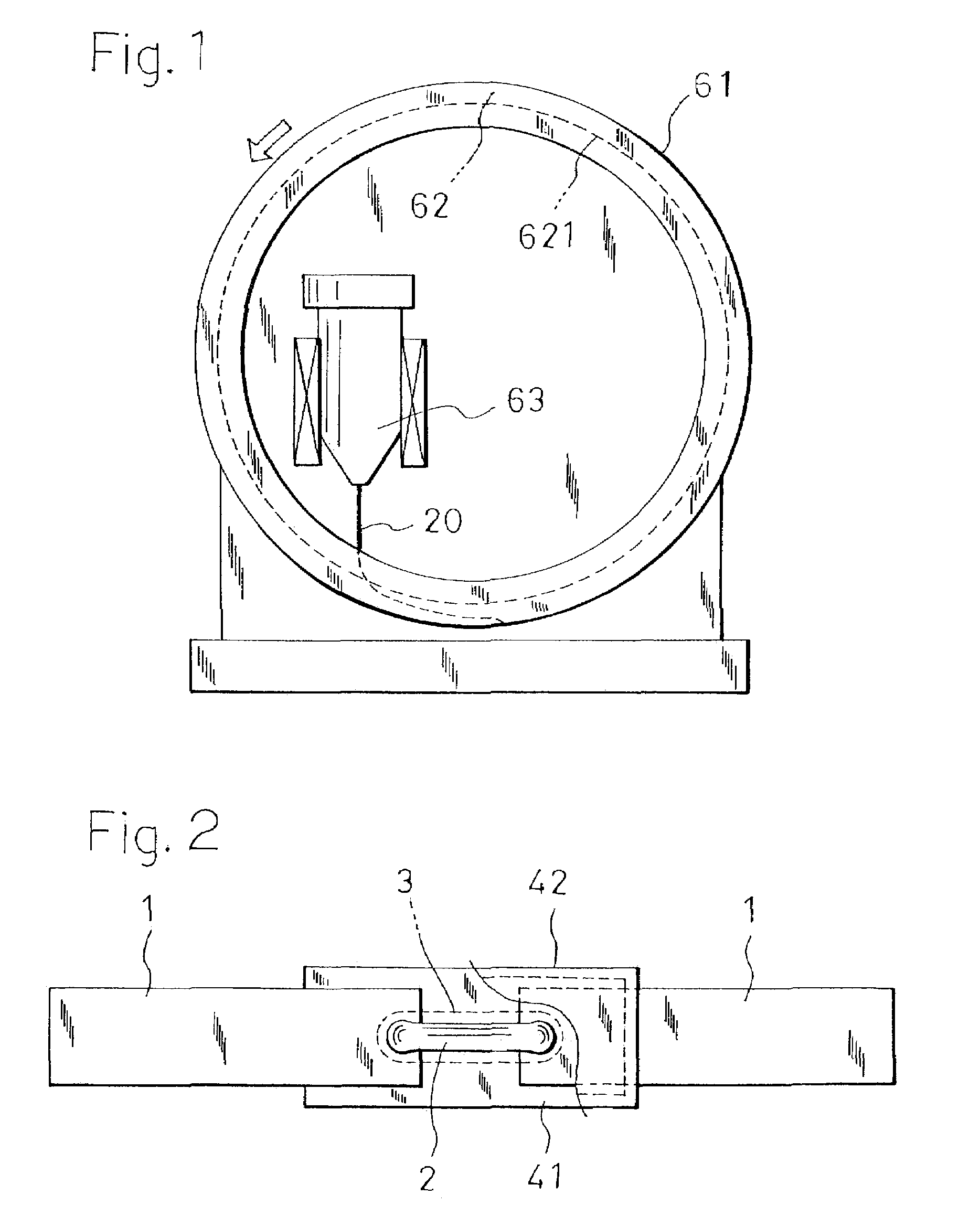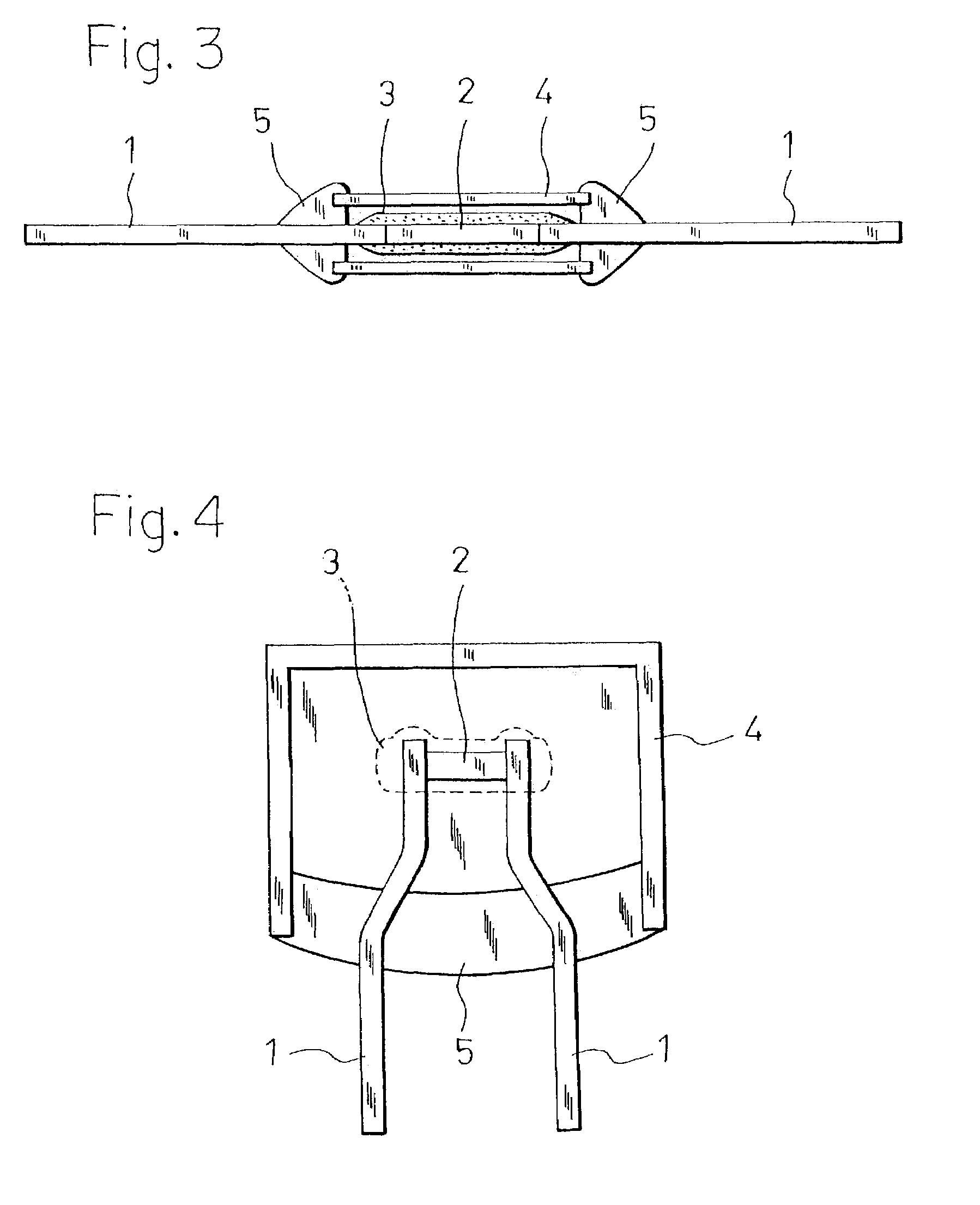Alloy type thermal fuse and fuse element
a technology of alloy type thermal fuse and fuse element, which is applied in the direction of protective switch terminal/connection, cell component details, cell components, etc., can solve the problem of difficulty in sufficiently suppressing the dispersion of the operating temperature of alloy type thermal fuse, and achieve the effect of reducing the resistance, satisfying the dispersion of the operating temperature, and high mechanical strength
- Summary
- Abstract
- Description
- Claims
- Application Information
AI Technical Summary
Benefits of technology
Problems solved by technology
Method used
Image
Examples
example 1
[0067]Alloy type thermal fuses having a composition of 52% In, 40% Sn, and 8% Bi were produced.
[0068]A DSC curve was measured. FIG. 7 shows the obtained DSC curve. The DSC evaluation was ⊚.
[0069]The operating temperatures of the alloy type thermal fuses were measured. As a result, the average temperature was 102.63° C., the highest temperature was 104.1° C., the lowest temperature was 101.6° C., and the standard deviation was 0.53. Dispersion of the operating temperatures was evaluated as acceptable.
[0070]The resistances of the alloy type thermal fuses were measured before the measurement of the operating temperature. As a result, the average resistance was 13.35 mΩ, thereby causing no problem. In the period from the production of fuse elements to the measurement of the operating temperature, none of the fuse elements was broken, and hence there was no problem in strength.
[0071]It was confirmed that, when 0.01 to 7 weight parts of one or both of Ag and Cu were added to 100 weight pa...
example 2
[0072]Alloy type thermal fuses having a composition of 52% In, 38% Sn, and 10% Bi were produced.
[0073]A DSC curve was measured. FIG. 8 shows the obtained DSC curve. The DSC evaluation was ⊚.
[0074]The operating temperatures of the alloy type thermal fuses were measured. As a result, the average temperature was 98.00° C., the highest temperature was 99.7° C., the lowest temperature was 96.6° C., and the standard deviation was 0.76. Dispersion of the operating temperatures was evaluated as acceptable.
[0075]The resistances of the alloy type thermal fuses were measured before the measurement of the operating temperature. As a result, the average resistance was 14.27 mΩ, thereby causing no problem. In the period from the production of fuse elements to the measurement of the operating temperature, none of the fuse elements was broken, and hence there was no problem in strength.
[0076]It was confirmed that, when 0.01 to 7 weight parts of one or both of Ag and Cu were added to 100 weight part...
example 3
[0077]Alloy type thermal fuses having a composition of 52% In, 36% Sn, and 12% Bi were produced.
[0078]A DSC curve was measured. FIG. 9 shows the obtained DSC curve. The DSC evaluation was ⊚.
[0079]The operating temperatures of alloy type thermal fuses of the tape type were measured. As a result, the average temperature was 94.15° C., the highest temperature was 95.9° C., the lowest temperature was 93.0° C., and the standard deviation was 0.74. Dispersion of the operating temperatures was evaluated as acceptable.
[0080]The resistances of the alloy type thermal fuses were measured before the measurement of the operating temperature. As a result, the average resistance was 15.28 mΩ, thereby causing no problem. In the period from the production of fuse elements to the measurement of the operating temperature, none of the fuse elements was broken, and hence there was no problem in strength.
[0081]It was confirmed that, when 0.01 to 7 weight parts of one or both of Ag and Cu were added to 10...
PUM
| Property | Measurement | Unit |
|---|---|---|
| size | aaaaa | aaaaa |
| operating temperature | aaaaa | aaaaa |
| liquidus temperature | aaaaa | aaaaa |
Abstract
Description
Claims
Application Information
 Login to View More
Login to View More - R&D
- Intellectual Property
- Life Sciences
- Materials
- Tech Scout
- Unparalleled Data Quality
- Higher Quality Content
- 60% Fewer Hallucinations
Browse by: Latest US Patents, China's latest patents, Technical Efficacy Thesaurus, Application Domain, Technology Topic, Popular Technical Reports.
© 2025 PatSnap. All rights reserved.Legal|Privacy policy|Modern Slavery Act Transparency Statement|Sitemap|About US| Contact US: help@patsnap.com



